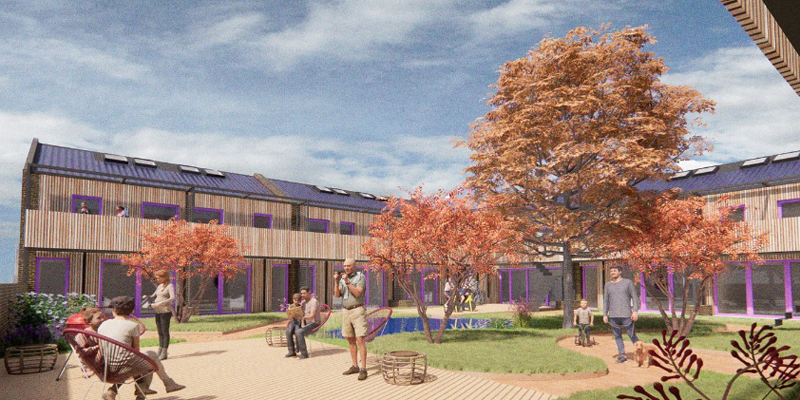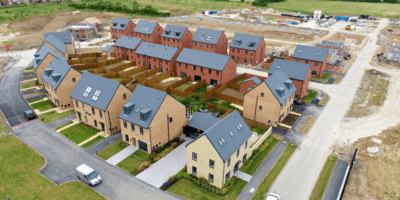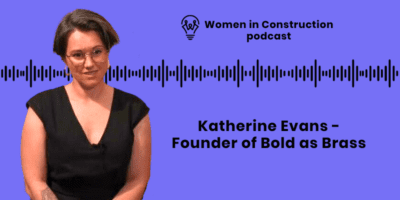Hannah Dixon is the founder of Progress in Practice. Hannah is a Chartered Architect and Certified Passivhaus Designer, specialising in sustainable, low-carbon construction and community engagement. She has a wide range of experience working on Passivhaus and low energy schemes, as both project architect and Passivhaus Consultant. Hannah is passionate about pushing the boundaries in everything she works on in order to deliver the most carbon-efficient buildings possible.
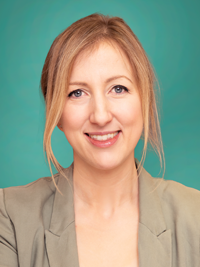
“The construction industry is responsible for 40% of the UK’s carbon emissions. This is huge, not to mention contributing to water scarcity, the biodiversity crisis or other factors. We must always remember that building new buildings is necessarily doing harm, and that our job as architects is to limit that harm as far as possible.”
I couldn’t find a role in a northern sustainability-focused architecture practice … so I set up my own!
Becoming an architect is a long and arduous process on its own and for me, it took nine years, two degrees, a diploma and four different architecture jobs to become qualified. And, to be honest, when I came to the end of that process, I wasn’t even sure I wanted to be an architect! I was and am passionate about sustainability and couldn’t bear the idea that the work I was doing was actively and significantly harming the environment, whilst masquerading as sustainable design.
My experience in practice up to that point had left me sceptical about architectural practices and claims, and disillusioned with the industry as a whole. Shortly after this, I started working for a company called Architype, which changed my perspective entirely and gave me a sense of purpose. They applied scientific rigour to the sustainability of their projects, whilst designing for people and communities. This reignited my excitement for architecture and design.
I was working in London as a project architect and Passivhaus designer on school and housing projects (more on Passivhaus shortly..!) and Architype was a great employer but, when I fell pregnant with my first child, all of a sudden living in London started to feel very expensive and difficult. My partner and I had met in Manchester and had always aimed to return someday, so eventually we decided the time was right. However, I couldn’t find a sustainability-focused practice which had room for me … so I started one! Sounds simple, doesn’t it?!

I set up Progress in Practice Ltd in 2021 and today I work alongside my incredible team, Stephen, another architect, and Hugh, an architectural assistant. The newest member of our team is Billie, my French Bulldog/Pomeranian cross, who loves nothing more than to rigorously test the durability of our proposed sample choices.
About Passivehaus
In the UK there is an issue with construction quality and buildings are typically built to be 40-60% worse performing than their designs. This means that, even with fairly unambitious building regulations, you are not getting what you are paying for, by a long way — and it means that we are likely to miss our decarbonisation targets if we rely on building regulations to achieve Net Zero buildings.
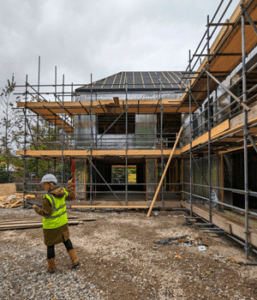
Passivhaus is a construction standard that eliminates the performance gap and delivers buildings which are 70-90% more efficient. Not only this but the Passivhaus standard is designed around creating the most comfortable, stable and healthy internal environment possible. At Progress in Practice, our team has over a decade of experience working on Passivhaus-certified projects and how best to apply these principles to schemes large and small. This means that we have a unique offering in terms of integrated Passivhaus and architectural design services, as this is our standard practice.
Spreading the word about low-energy design
We like to stay engaged with local universities in order to challenge our own perspectives as well as offer learnings from our practice. Our aim is to spread the word of low energy design and taking a robust and scientific approach to sustainability, through Passivhaus principles.
The University of Salford’s first Energy House research facility opened in 2012, and was followed by Energy House 2.0, which was completed in February 2022 and builds on the success of the first project. It’s basically a massive research facility containing two environmental chambers, each of which are able to accommodate two detached houses and under controlled conditions, recreate a wide variety of weather conditions with temperatures ranging between -20˚C to +40˚C and simulated wind, rain, snow and solar radiation.
The university is working in partnership with a number of large housebuilders and smaller construction companies to build test houses within the chambers. The Energy House 2.0 project was part-funded by the European Regional Development Fund and Office for Students.
The facility is unique and it is playing a key role in accelerating the progress towards low carbon and Net Zero housing design and it has become a hub for best practice and learning. Other members of the team and I have visited the Energy House 1.0 and 2.0 to learn more about what they are doing there. We have also attended training there on retrofitting, (so interventions to adjust, reuse, or upgrade a building to suit new conditions or requirements) and PAS2035, the British Standard for retrofitting dwellings.
Minimising CO2
The construction industry is responsible for 40% of the UK’s carbon emissions. This is huge, not to mention contributing to water scarcity, the biodiversity crisis or other factors. We must always remember that building new buildings is necessarily doing harm and that our job as architects is to limit that harm as far as possible.
However, it’s not all negative, most of the things that we do to reduce carbon emissions bring with them additional benefits. For example, with ventilation and good indoor air quality, we can limit the amount of CO2 in our internal spaces. It is important to remember that in the UK we spend 90% of our time inside buildings, so it should be a basic requirement that these buildings offer safe, healthy environments.
CO2 externally sits at around 400PPM (parts per million) and internally it should be around 800PPM. If it goes beyond 1500PPM this can start to impact people’s concentration, making it harder for children to learn and for adults to be productive. However, it is not unusual for internal spaces to reach 3000PPM, at which point you can actually start to suffer headaches and ill health — not to mention damp and mould growth caused by poor ventilation.
Collaboration on bold, far-reaching strategies needed

In 2019 the IPCC [the Intergovernmental Panel on Climate Change, an intergovernmental body of the United Nations] report gave the world ten years to make radical changes, in order to limit the rise in global temperatures to 1.5 degrees Celsius and curb the harm and suffering the climate emergency will cause.
Four years have passed and not nearly enough has happened, meanwhile, the impact of climate change is being experienced more widely and more extremely. The 28th United Nations Climate Change Conference (more commonly known as COP 28) in the United Arab Emirates, should be the forum for collaborating on bold, far-reaching strategies. It would be a good time for ordinary people to come together and communicate their appetite for positive change.
Connecting with the Womanthology community
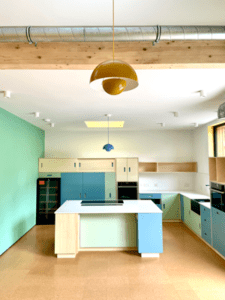
Coming up next
Next for me and the Progress in Practice team is that we are joining in with the Passivhaus open days in November, with tours of our Passivhaus Plus projects. With Passivhaus Plus projects, additional energy is generated from sources such as photovoltaics (solar panels) so there’s enormous potential to make an impact. We are very excited to have just received planning permission for five new Passivhaus homes in Trafford and have a number of exciting community-led projects kicking off in 2024.

